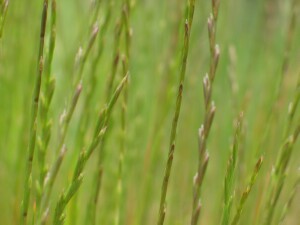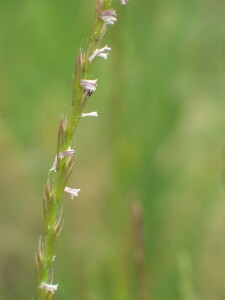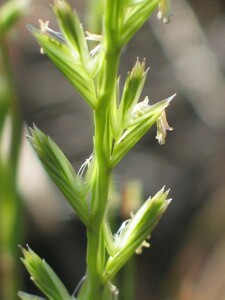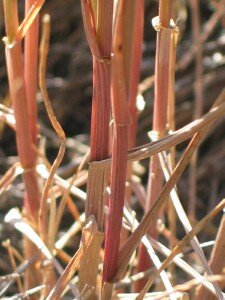Wimmera Rye-Grass
Back | Salinity Indicator Plants Home | Common name home | Scientific name home | Photo Gallery | Glossary
| Wimmera Rye-Grass photos | Family: Grass (Poaceae syn. Gramineae) |
| Scientific Name: | Lolium rigidum |  Wimmera Ryegrass - spikes Photo: A J Brown | |||||
Other Common Name: | Annual Rye-grass | ||||||
Status: | Native to the Mediterranean. Naturalised in all Australian States. | ||||||
Plant Description: | Annual grass, up to 90 cm tall and forming tussocky clumps. Lower stems and nodes are often purplish or reddish. Leaves are long and narrow, without hairs, are ribbed on the upper surface and have a shiny lower surface. The flower-head is a narrow spike with short flattened spikelets on either side of the spike’s stem (rachis). The stalkless spikelets arise from hollows along the rachis are orientated with their thin edges facing the rachis. The spikelets contain 5-11 florets. Flowers in spring and early summer. | ||||||
Habitat: | Found on a range of soil types from sandy loams, clay loams to heavy clays.
| ||||||
Comments: | The species has been sown with clovers to produce pasture swards because of it's high palatability. Also occurs in wasteland, and sometimes invades and competes with crops. Mainly a winter and spring growing plant. Large amounts of pollen are produced and this often causes hay fever. Very similar to other species of Rye-grass, such as Perennial Rye-grass – Lolium perenne and Italian Rye-grass – Lolium multiflorum, but compared with which, it generally has greater salt tolerance. From the former it differs from having longer glumes (> ¾ spikelet length) and rolled leaves, instead of flat or folded leaves, when emerging or young. Italian Rye-grass differs from both other species in each floret having an awn from at least 4 mm long. However, these distinctions are often confused due to hybridisation between all the species. | ||||||
 Wimmera Ryegrass - flowering spike Photo: A J Brown |  Wimmera Ryegrass - spikelet Photo: A J Brown |
|



